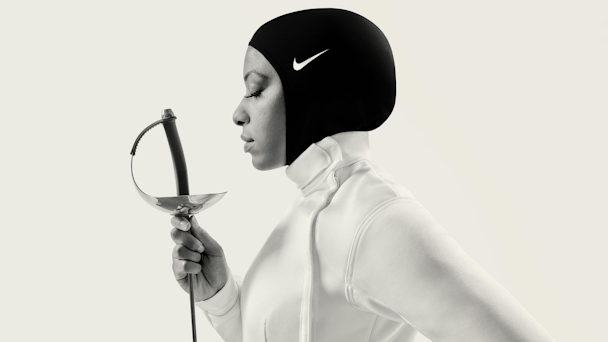26% of UK women still believe their ethnic group is portrayed negatively in ads
The findings of a recent survey have highlighted the struggles faced by women of minority ethnic heritage when it comes to prejudice, stereotyping and visibility in the media. Eight out of 10 (81%) say discrimination is widespread in the UK, and 63% think it’s getting worse.

37% of women don’t feel like equal citizens / Image via Nike
The study was carried out by media agency UM on behalf of the Unstereotype Alliance, an advertising and media industry-wide initiative convened by UN Women to tackle stereotypes and advance progressive portrayals of all people.
It canvassed 2,000 UK women from a wide range of ethnic minority backgrounds, including Black African and Caribbean, Jewish, White Continental European, Middle Eastern, South East Asian and Southern Asian.
What did the survey find?
-
More than a third of the women (37%) said they ‘don’t feel like an equal citizen,’ and a further third (31%) say they experience subtle acts of racism at least monthly, while a quarter (23%) experienced overt and explicit acts of racism just as often.
-
In addition, more than a third (37%) say they feel pressure to look a certain way in order to fit in with those around them.
-
Many of the women surveyed highlighted the media and advertising industries as contributing factors to negative perceptions: more than a quarter (26%) say their ethnic group is portrayed negatively in ads, with women of Middle Eastern (30%) and Black Caribbean descent (29%) most likely to feel that way.
What are the major issues?
-
‘Invisibility’ poses a significant challenge in advertising and is felt acutely by women from certain backgrounds: notably 52% of Middle Eastern women, 50% of Southern Asian women and 48% of Jewish women say they rarely or never see people from their ethnic group in ads.
-
Authentic representation in advertising across a range of products and services was seen as rare, with brands in the entertainment (34%), clothing/fashion (32%) and dating app (31%) categories seen as the worst offenders when it comes to stereotyping.
-
YouTube was singled out as the best media/advertising channel for representing ethnic minority groups by nearly half (49%) of those surveyed, followed by traditional linear television (47%). However, advertising on social platforms was seen as far less inclusive: only 36% recognized people from their ethnic groups represented in ads on Instagram and 27% in Facebook ads, while Twitter ads came in last place (22%).
-
Traditional media other than TV also scored poorly: only a quarter of the sample feel radio and newspaper advertising (both 25%) show enough representation of their ethnic groups.
What can the industry do about it?
Despite these shortcomings, many women of minority ethnic heritage agree brands and advertisers have a key role to play in reducing discrimination and stereotyping. They were seen as the second most influential factor in tackling UK inequality and injustice after ‘famous role models.’ Moreover, nearly three-quarters (72%) say they would be more likely to buy products and services from brands and companies who show people from their ethnic group(s) in a positive and authentic way in their ads.
Melda Simon, UK lead for the Unstereotype Alliance at UN Women, said: “What we see and hear in advertising and on media channels affects how we see ourselves and the world around us. This research demonstrates the importance of approaching intersectionality through a culturally-nuanced lens that considers the experiences of people from a variety of communities.
“The advertising, media and creative industries are all about influence, so there’s no more logical partner as we go about trying to rid society of the ingrained stereotypes that are holding back humanity.”
Rachel Forde, UK chief executive officer at UM, added: “The argument for inclusion and authenticity among brands and advertisers is a commercial one, as well as a moral one. If people see people like themselves in your ads, they’re far more likely to buy your products. Brands can be more successful, as well as become better corporate citizens, simply by reflecting their full audience in their marketing.”
If you want to read more stories like this, sign up to The Drum’s Work and Wellbeing briefing here.

